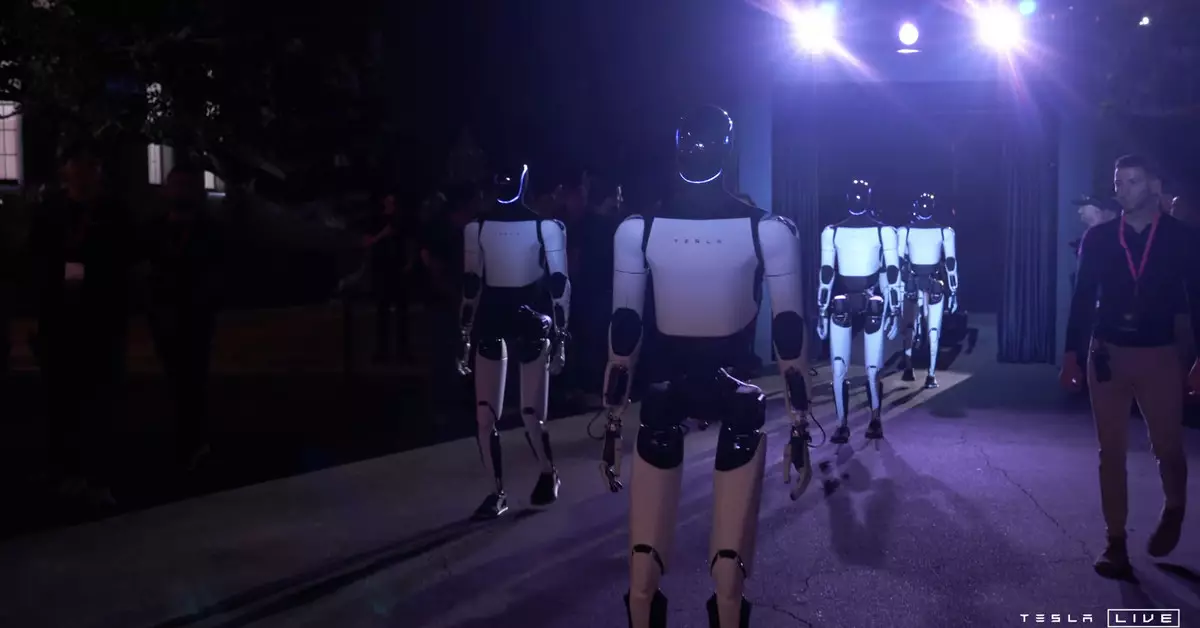At the recent Cybercab event, Tesla made a significant leap in the field of robotics by unveiling its humanoid robot, Optimus. Tesla CEO Elon Musk boldly predicted that Optimus would revolutionize the market, suggesting its potential to become the most impactful product in history. With years of experience in electric vehicles, Tesla is now pushing the boundaries of automation, blending technology with everyday life in a way that may redefine our relationship with machines.
During the event, a series of Optimus robots demonstrated their abilities, seemingly ready to assist with mundane tasks that fill our daily routines. Musk highlighted how these robots could walk dogs, babysit children, and even maintain lawns. The price point for such sophisticated automatons is estimated to be between $20,000 and $30,000, which Musk termed as “long-term” pricing. This cost, if realized, places the Optimus within reach of middle-class consumers, potentially making robotic assistance commonplace in households.
Although the initial demonstrations during the event generated excitement, they also raised eyebrows regarding the robots’ capabilities. While the robotics displayed charming behaviors, such as waving and engaging in light-hearted games like rock-paper-scissors, the functionalities appeared limited. The much-anticipated spectacle was somewhat deflated when the robots were seen merely holding cups of ice rather than serving drinks or performing more complex tasks. This discrepancy between expectation and execution begs the question of how genuinely functional these robots will be in real-world settings.
Optimus’s journey has been anything but linear. What began as a whimsical concept in 2021, showcased by a performer in a clunky robot suit, has evolved significantly since its initial unveiling. Last year, a refined prototype took the stage, demonstrating improved mobility. Musk hinted that by the end of 2023, we might see these robots perform practical tasks, and external sales could commence as early as next year. This timeline, however, serves both as a bold promise and a challenge for Tesla to deliver on their ambitious aspirations.
As the robotics industry continues to accelerate, Tesla’s Optimus represents a crucial step towards integrating advanced artificial intelligence into daily life. While the current demonstrations have exhibited a limited range of practical applications, the potential for growth and innovation remains immense. The promise of robots that can blend seamlessly into our homes and communities is intriguing and offers a tantalizing glimpse into a future where human and machine coexist harmoniously.
While Tesla’s Optimus has created a buzz around home automation and the possibilities of robotic assistance, the gap between demonstration and practical application remains to be bridged. As we await further developments, one cannot help but wonder what the future holds for this innovative technology and its potential to transform our lives.


Leave a Reply